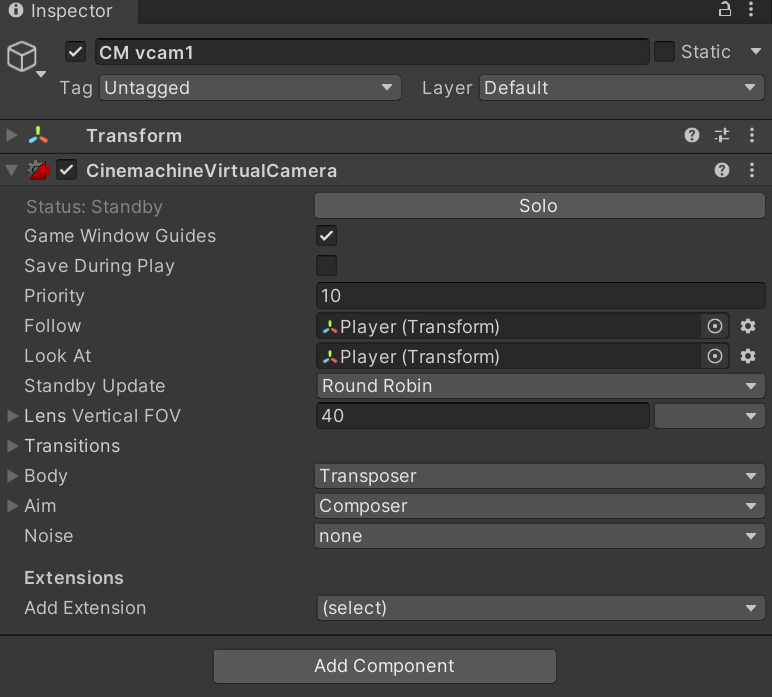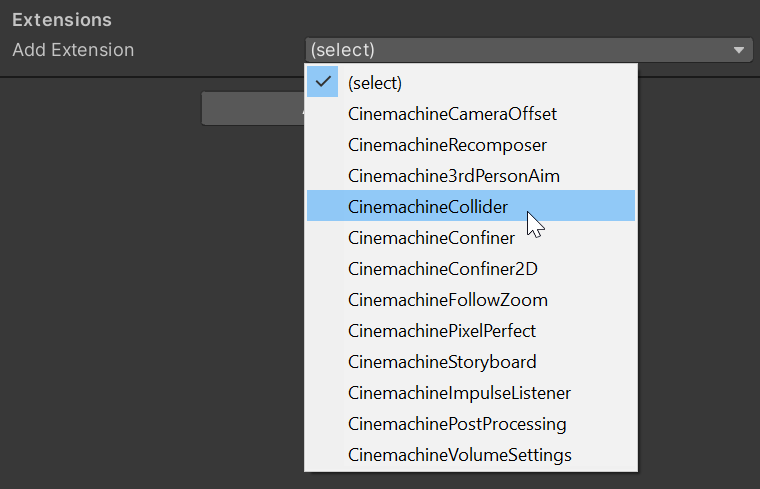Cinemachine
Cinemachine is a powerful tool for using cameras in Unity. This package is installed by default in the Genies Experience SDK and ready to use.
Here are some popular use cases:
- Create a 3rd person camera following the player
- Create a cut scene
- Blend from one camera to another
Read Unity's Cinemachine Manual for more information.
Adding Cinemachine Cameras
To add a cinemachine camera, right click in the Hierarchy window. Select the Cinemachine section and choose one of the several options of cameras.

Creating a 3rd Person Camera
A 3rd person camera is useful for most games so the camera follows the player as it moves around.
The Character Controller tool includes a third person example that uses Cinemachine cameras.
Steps to Add
Add a Virtual Camera
Add a Virtual Camera to the Hierarchy. In the Inspector window, set the Look At and Follow property to the player Game Object reference. The camera will now follow the player as it moves.

Add a Collider
The Virtual Camera object can add extensions to the component. In the Inspector window, click the Add Extension dropdown at the bottom and select CinemachineCollider. This will attempt to fix an issue if the camera is ever blocked by another object from seeing its target.

TypeScript Usage
Package
The Cinemachine API can be accessed by importing the package, like so:
import { CinemachineVirtualCamera } from "Cinemachine";
Example
Here is an example of using TypeScript with the Cinemachine API to make a cutscene between two cameras:
import { Mathf, MonoBehaviour, Time } from "UnityEngine";
import { CinemachineVirtualCamera } from "Cinemachine";
export default class MyScript extends MonoBehaviour {
@Header("Cinemachine Settings")
@SerializeField private startCam: CinemachineVirtualCamera;
@SerializeField private endCam: CinemachineVirtualCamera;
@SerializeField private transitionTime: number = 5;
private elapsedTime: number = 0;
private Start() : void {
if (this.startCam != null)
{
this.startCam.Priority = 1;
}
if (this.endCam != null)
{
this.endCam.Priority = 0;
}
}
private Update() : void {
if (this.elapsedTime < this.transitionTime)
{
this.elapsedTime += Time.deltaTime;
let blend = Mathf.Clamp01(this.elapsedTime / this.transitionTime);
this.startCam.Priority = Mathf.RoundToInt(1 - blend);
this.endCam.Priority = Mathf.RoundToInt(blend);
}
}
}